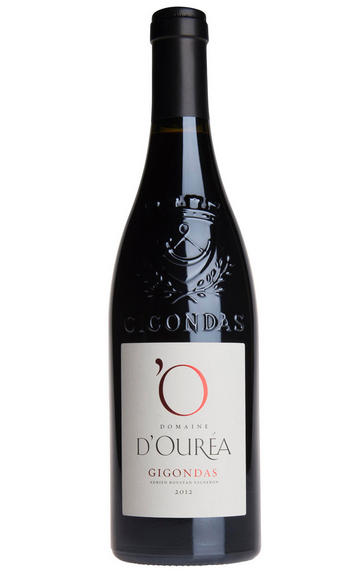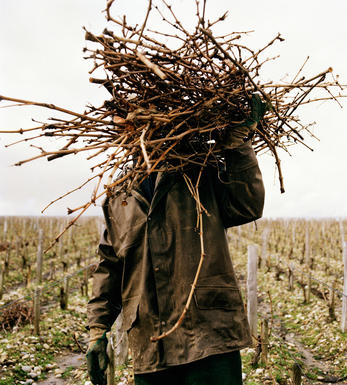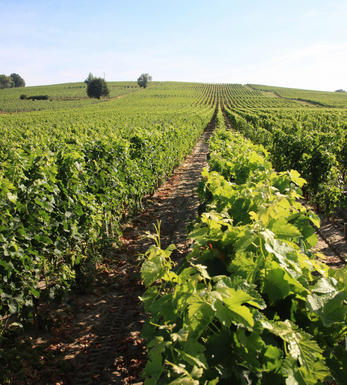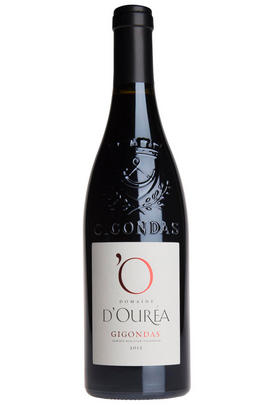
Critics reviews
Created in 2010 and covering 18 hectares, this up-and-coming estate is run by Adrien Roustan, who spent time in both Burgundy and California making wine. While his 2011s are quite strong, his 2012s appear to be a step up.
Drink 2013-2018
Jeb Dunnuck - Wine Advocate #210, Dec 2013
About this WINE

Domaine d'Ourea
Adrien Rousten is a vigneron’s vigneron; passionate, committed and almost protective of his vines, which cover five hectares in Gigondas and 10 in Vacqueras the latter located high above the village, on the border with Beaumes-de-Venise.
Domaine d'Ouréa is farmed with strict biodynamic principles.

Gigondas
Gigondas has been renowned for the quality of its wines since Roman times, although it was not really until it was classified as a Côtes du Rhône Villages in 1966 that it began to realise its potential. It achieved AC status in 1971 and today produces some of the finest, most underrated and under-priced wines in the Rhône valley; although, for the last two of these at least, probably not for much longer.
Gigondas' 1,200-hectare of rugged vineyards are located east of Châteauneuf-du-Pape, beneath the famous mountains of Dentelles de Montmirail. Gigondas produces sumptuous, plummy reds with a good structure and a sprinkle of pepper. It is similar to (if a touch less slick than) good Châteauneuf-du-Pape which, at its best, it can challenge and even surpass.
Made with a maximum of 80 percent Grenache, combined with at least 15 percent Syrah and/or Mourvèdre, the rest can be made of any of the varieties authorized for Côtes du Rhône – apart from Carignan. The wines can normally be broached after two to three years, while the best repay ageing for 10 years or more. The region also produces dry, Grenache-dominated rosés which are good but can sometimes lack a little vitality.
Recommended Producer: La Bastide St Vincent, Domaine Montirius

Southern Rhône Blend
The vast majority of wines from the Southern Rhône are blends. There are 5 main black varieties, although others are used and the most famous wine of the region, Châteauneuf du Pape, can be made from as many as 13 different varieties. Grenache is the most important grape in the southern Rhône - it contributes alcohol, warmth and gentle juicy fruit and is an ideal base wine in the blend. Plantings of Syrah in the southern Rhône have risen dramatically in the last decade and it is an increasingly important component in blends. It rarely attains the heights that it does in the North but adds colour, backbone, tannins and soft ripe fruit to the blend.
The much-maligned Carignan has been on the retreat recently but is still included in many blends - the best old vines can add colour, body and spicy fruits. Cinsault is also backtracking but, if yields are restricted, can produce moderately well-coloured wines adding pleasant-light fruit to red and rosé blends. Finally, Mourvèdre, a grape from Bandol on the Mediterranean coast, has recently become an increasingly significant component of Southern Rhône blends - it often struggles to ripen fully but can add acidity, ripe spicy berry fruits and hints of tobacco to blends.



Buying options
Add to wishlist
Description
The clay in Aidren’s Gigondas vines is of a redder colour, indicative of iron oxide in the soil. Some of the vines are a little further up the hill, where the soil is stonier and even less fertile. The 2012 is dense with tightly packed tannins, smoky and savoury notes and a compelling, linear finish.
Simon Field MW, Rhône Wine Buyer
Aidren Rousten is a vigneron’s vigneron; passionate, committed and almost protective of his vines, which cover five hectares in Gigondas and 10 in Vacqueyras, the latter located high above the village, on the border with Beaumes-De-Venise. Biodynamic viticulture and an almost quixotic refusal to compromise have resulted in yields of 17 hectare litres per hectare in 2012 and, unsurprisingly, magnificently expressive fruit.
wine at a glance
Delivery and quality guarantee